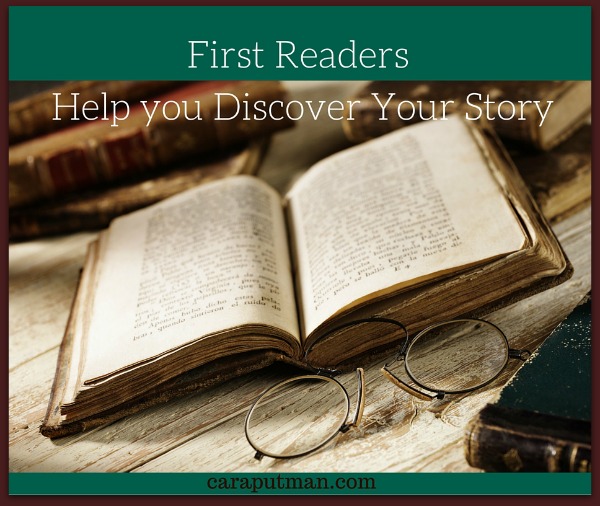
Hello. My name is Cara. I’m a recovering reader and writer. I live and breathe words. But sometimes as a writer I need help ensuring the story I see so vividly in my mind translates into words that resonate with readers. But I wrote the story. I saw it in living color as it played in real time.
How do I bridge the gap?
I use first readers. Not every reader does this. Sometimes no one sees the book other than their editors until the book is available for everyone. I’ve had some books like that, but not many.
I much prefer to work with first readers who help me identify if a story is working. This happens on multiple levels. And sometimes I work with different first readers to ensure that multiple facets of the story are looked at it before I turn it in. My goal is to always send my editor the very best book that I can and first readers are a key piece of the process. So what do I look for?
- Look for readers who love your books. I want a first reader who has already read a few of my books and has a sense of my style for telling a story. I’d call that style my personal writing voice, but I’m not necessarily looking for readers who understand the nuances of writing. I want first readers who are readers first and foremost and that love my books.
- Have a variety of first readers. I tell each reader what I’m hoping to learn from their read of the book. I often have to tell them not to bother with grammar and typos. They are free to mark those, but my editors and I will find most of those. Instead, what I’m interested in at the first reader level of the story is connection. Are they connecting with the story and characters? If they aren’t, I want to understand why. What do I need to fix to make the story resonate and be un-put-downable? (Yep, I just created a word!)
- Know the strengths of your first readers. I have one who sees inconsistency in eye color, places, etc., like no other. I rely on her! I have others who understand story and can let me know if the pacing is off. Still others just let me know what works or doesn’t work for them. Each plays a valuable role. Understand what each reader brings to the story and know that’s what you can hope to get in their read.
- Remember to say thank you. The acknowledgments section of the book I turn in this month will be obnoxiously long. That’s okay. Many people have helped me get the idea to the point that it could become a book. And many more have helped me as I’ve written it. I also like to send little goodies as a thank you. Sometimes it’s a pack of red pens 🙂 But make it something that lets them know you appreciate them. And don’t forget a copy of the finished book.

Comments 6
Hey there, it’s been a while and I just happened to see your post on Google+. Thank you for sharing the information. I’ve never heard the term “first readers” before. Not sure if it’s the same as a beta reader or not. I think it’s a great concept and I’m bookmarking this post for future reference (yup, it’s that good). Thank you for sharing this with us. Kristena
Author
Hi, Kristena. Thanks for stopping by! I think what I call first readers would be very close to what others call Beta readers. Hope all is well! And thanks for the encouragement.
Are you in a critique group, too?
Author
Terri, I was for awhile when I was first starting. Then I started writing too fast to make it work well. But I still have brainstorming partners, first readers, etc.
Hi Cara,
How does one become a first reader? You know me, and you know my interest in writing. I find that I prefer the proofreading, editing, and critiquing of writing more than actual writing. I’d love to dive into the first reader world!
Author
You can always ask authors you know — 🙂 If there are authors where you love their books and writing, you could email them through their websites or message them through Facebook and offer to do that for them. I know some authors who won’t let anybody see the book until it’s perfect. But I know there are a lot like me who love first readers.